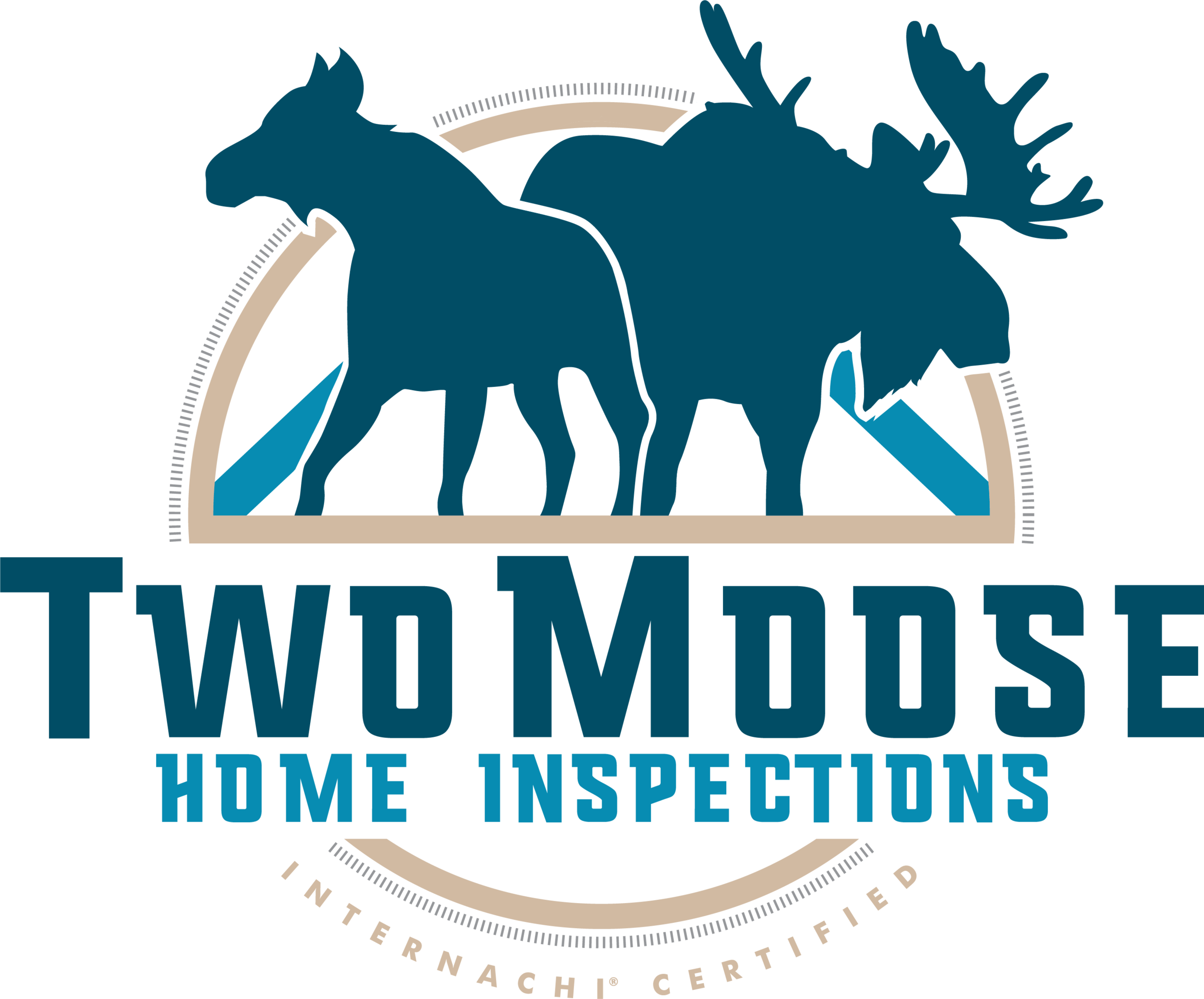S01E09 - Cognition: How Indoor Air Quality Impacts Your Brain
Transcript
Welcome to Moose Tales. I'm Jon with Two Moose Home Inspections and I have some short home inspection topics I need to share with someone. So, let's dive right in,
whether we think about it or not. Every day we're breathing air, and we don't always think about the composition of the air that we're breathing. But that composition is extremely important.
So, let's break it down. What we actually are breathing in is
breathe about 78% nitrogen, about 21% oxygen. There's a little bit less than 1% of argon, which is an inert gas. And then there's some other particles and stuff that are floating in the air that we happen to breathe in.
Thinking about it, you might say, well, we want to have as much oxygen as possible.
But that's actually a very, very, very bad thing.
First off, let's say we were in a 100% oxygen rich environment. Well, one lighting of a match or a spark or anything like that, and the whole place would explode. Oxygen is highly flammable. The other part of that is if we were in an area that had a whole bunch of oxygen in it, what would happen is that we would be breathing in that oxygen.
Eventually, our red blood cells wouldn't be able to move any more oxygen. And so, what would happen is we'd have some free oxygen inside of our lungs. That free oxygen then is going to bind to proteins inside of our lungs. And then what's going to happen is we're going to have issues with our neurological system. Our retinas are going to start being attacked by all of this free oxygen, and basically, we're going to die.
And so, 100% oxygen would be a very, very, very bad thing.
When we talk about nitrogen, we understand that it's not really reacting in the body or doing very much of anything. But what happens if we have too much?
Well, if you're a scuba diver,
then you probably already know that you can get decompression sickness whenever you dive really deep, and you stay down there for a while.
That nitrogen as you come back up can then accumulate in your body and then cause a lot of illness and possibly death as well. And so, you really don't want to have too much nitrogen, you don't have too much oxygen, you really don't want to have too much of anything. You really need to keep things in just the right space.
So, what does this have to do with home inspections? What does this have to do with homes in general? Well, right now I'm inside my office. It's not a big office. It's not a small office. It's just a medium sized office. I'm a human breathing in and out there. And so, one of the things that, you know, that I'm breathing out is carbon dioxide.
This is not to be confused with carbon monoxide, which is a byproduct of incomplete combustion. What I'm doing is I'm just breathing out what naturally comes out of my body, which is carbon dioxide. And so, what happens is that I'm breathing out carbon dioxide. That dog is breathing out carbon dioxide. That dog is breathing out carbon dioxide. And so now we have three organisms breathing out a whole bunch of carbon dioxide.
Well, is that a bad thing? I don't know. It depends. Let's talk about Houses. Houses, some houses are built much more tightly than other houses are built. What does it mean to be tight? It means airtight. It means that we are controlling the amount of air that is moving in and out and through the house. Well, why would we want to do that?
Well, one reason is because we want to control the amount of moisture that is inside the house. Another reason is that we want to keep all that nice, conditioned air, whether it is air conditioned like nice and cold, or if it is heated from the heaters. And we have that hot air inside of our house, we want to keep that in there during the winter.
That conditioned air
We want to make sure that we are energy efficient. So, a lot of houses are becoming more tight now. Should a house be tight if it is designed from the ground up to be tight? The answer is most definitely yes. I think that every house should be extremely tight.
We should have mechanical ventilation. We should have the ability to really control the environment that we live in because there are a lot of pollutants that are outside in the world. And if we can get rid of those pollutants, since we spend about 90% of our lives inside of buildings, it would probably be in our best interests to have the best air quality inside of our houses that we possibly could.
So, this brings us back to carbon dioxide. Okay, well, I'm breathing it out. So, like, that's perfectly fine, right? There's no problem with that. Well, there normally isn't. Whenever we're talking about the great outdoors.
in the great outdoors. It's probably 400 parts per million on average outside. But inside of your office, for instance, you could be at about 2500 parts per million.
So, we're going from 400 parts per million to 2500 parts per million. Now, there's some really cool people at a place you might have heard of called Harvard. And what they did at Harvard is a study just like a lot of people have done studies, this is extremely well documented that what happens is that there is a cognitive decline, meaning your brain doesn't work so good.
whenever you don't have the right amounts of oxygen and nitrogen and other things that you're breathing in.
Whenever we get too many parts per million of carbon dioxide, what you're going to see is about a 2% decline in cognition every 500 parts per million. So, every 500 parts per million that that carbon dioxide increases, you're seeing a 2% reduction in cognition. Now, quick mental math, I can't really do it because in my office I might have 2500 parts per million, comparatively speaking, to the 400 parts per million that I would find outside.
So that's a pretty big cognitive decline, which is why I still at this point can't give you the answer as to what percent cognitive decline I'm suffering from right now. But you could have drowsiness. You could have slight nausea, you could have fatigue, you could have headaches and other things like that all associated from carbon dioxide. Now, what do you do about this?
Well, you could open a window, but if you open the window, then all those pollutants are coming in from that window. Is that a problem? Yes and no. It depends. Are we in the middle of wildfire season or are there a lot of pollutants inside of the air, like all that smoke from wildfires? Well, if that's the case, then I probably don't want to have that air coming into my house.
Is today an ozone action day? Well, then I probably don't want that ozone coming into my house. So, what am I to do? Well, a lot of houses have what's called an ERV. There's an ERV and an HRV energy recovery, ventilator, heat recovery, ventilator. With both of these things, what they do is filter outside air.
They cross the paths of the air going in and the air going out. And what that does is transmit the heat energy that is in there. So, if the room is called, the room stays cold. If the room is hot, the room stays hot, and its really energy efficient.
And so all that fresh air is coming in to make sure that our ratios of nitrogen and oxygen and carbon dioxide, all of that is all the same. And what's happening is it goes through a filter. So, we aren't getting any of those pollutants from exterior air, and we have all of that interior air being exhaust it out.
So, we're getting kind of a fresh ratio constantly throughout the entire day. And so, whenever we have these air reviews and reviews, which we did a whole video on, we really have really good control of the air inside of our house.
and they have these sensors that you can put into different rooms that will communicate with your ERV.
It will monitor the amount of carbon dioxide that is in that room and it will be able to say, Ah, there is a lot of carbon dioxide in this room because we have one human and we have two 80 lb dogs that are inside of this room right now that are breathing heavily. And we need to now get more fresh air into this room.
So that way John is going to have better cognition.
Now there's also something called PM 2.5 that is particulate matter, 2.5 micrometers in size that is extremely small, much, much smaller than a human hair, just ridiculously small.
Again, we did a whole video on this. And so all that I have to say about that is we're going to have to do another podcast for PM 2.5. But a lot of times if you can smell something, that means that there is a PM 2.5 particle that is in the air. And what I mean by this is if you light incense, if you're cooking, if your dog farts, if any of those things happen, that is PM 2.5 and in fact
This same Harvard study shows that PM 2.5 also affects cognition.
Therefore, we should really be paying very close attention to indoor air quality. And I think having an ERV or an HRV is probably one of the best things that you can do to manage that.
And that is why I'm advocating don't light a candle, don't light incense, don't spray on a whole bunch of perfume, don't put in your lavender, whatever in and please don't use an ozone machine inside of your house that needs a whole podcast on its own as well.
That ozone machine is one of the worst things you can do for your health, for the way that it interacts with chemicals and the way it interacts with materials inside of your home. Basically, what I want is I want that fresh air from outside and that fresh air from outside. I want to be filtered to get rid of all that.
PM 2.5 type of particulates that are coming into the house. I want to have really good ratios of
not a high level of carbon dioxide. And I want to make sure that my cognition in my home is the best it can possibly be. And that's a Pod.


